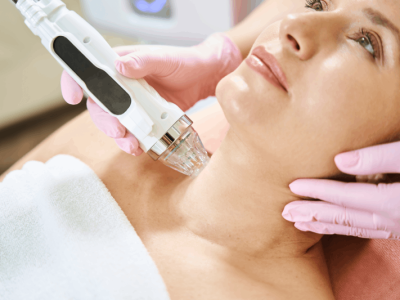Facial asymmetry is a common condition that occurs when the two sides of the face are not perfectly aligned. This can be caused by a variety of factors, including genetics, injury, or surgery. While facial asymmetry is often considered a cosmetic concern, it can also lead to functional problems such as difficulty chewing or speaking. Treatment options for facial asymmetry include surgery, orthodontics, and other non-surgical approaches. In this article, we will explore the risks and benefits of facial asymmetry treatment.
Benefits of Facial Asymmetry Treatment
Improved Appearance
One of the primary benefits of facial asymmetry treatment is improved appearance. By realigning the facial features, treatment can create a more balanced and aesthetically pleasing appearance. This can improve self-confidence and overall quality of life.
Improved Function
Facial asymmetry can also lead to functional problems, such as difficulty chewing or speaking. Treatment can improve these functional problems by realigning the jaw and other facial features, allowing for better function and improved quality of life.
Improved Oral Health
Facial asymmetry can also lead to oral health problems, such as tooth decay or gum disease. By realigning the jaw and other facial features, treatment can improve oral health and prevent future problems.
Improved Breathing
Facial asymmetry can also lead to breathing problems, such as sleep apnea. Treatment can improve breathing by realigning the jaw and other facial features, allowing for better airflow and improved quality of sleep.
Risks of Facial Asymmetry Treatment
Surgical Risks
Facial asymmetry treatment often involves surgery, which carries certain risks such as bleeding, infection, and anesthesia complications. It is important to choose a qualified and experienced surgeon to minimize these risks.
Nerve Damage
Surgery for facial asymmetry can also carry a risk of nerve damage, which can lead to numbness or weakness in the face. This risk can be minimized by choosing a qualified and experienced surgeon who uses the latest techniques and technology.
Recovery Time
Facial asymmetry treatment often involves a significant recovery period, which can be uncomfortable and inconvenient. It is important to follow the doctor’s instructions for post-operative care to ensure proper healing and minimize the risk of complications.
Cost
Facial asymmetry treatment can also be expensive, especially if it involves surgery or other invasive procedures. It is important to consider the cost of treatment when making a decision, and to choose a treatment option that is within your budget.
Non-Surgical Options
In addition to surgical options, there are also non-surgical options for treating facial asymmetry. These include orthodontics, facial fillers, and other non-invasive approaches. While these options may be less risky and less expensive than surgery, they may also be less effective for certain types of facial asymmetry.
Choosing the Right Treatment Option
Choosing the right treatment option for facial asymmetry depends on a variety of factors, including the cause and severity of the condition, the patient’s goals and preferences, and the risks and benefits of each treatment option. It is important to work closely with a qualified and experienced healthcare provider to develop a treatment plan that meets your specific needs and goals.
In general, non-surgical options such as orthodontics or facial fillers may be more appropriate for mild to moderate cases of facial asymmetry, while surgical options may be more appropriate for more severe cases. However, every case is unique, and the best treatment option will depend on a variety of factors.
It is also important to consider the risks and benefits of each treatment option when making a decision. While treatment can provide significant benefits such as improved appearance, function, and oral health, it can also carry certain risks such as surgical complications, nerve damage, and recovery time.








Comments